标签:子进程 失败 运行 代码分析 parent strcpy 统计 tab键 图片
alias ll=‘ls -al‘来设置命令的别名。内建命令type:可以使用type命令来查看某个命令是否为内建在bash当中的命令。
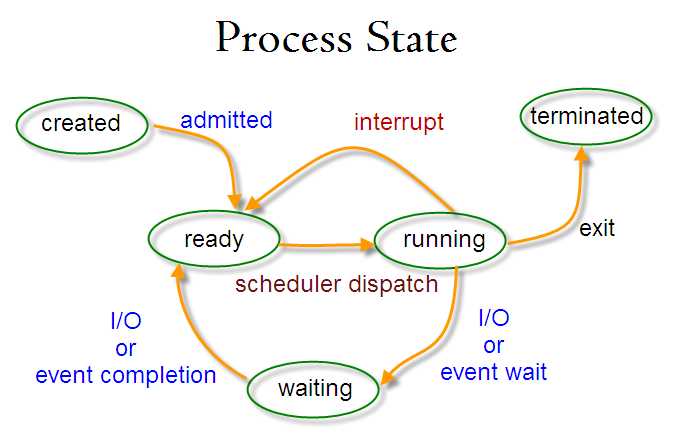
终止(terminated)
gedit hello_shell.sh#!/bin/bash
for ((i=0; i<10; i++));do
echo "hello shell"
done
exit 0$ chmod 755 hello_shell.sh$ ./hello_shell.sh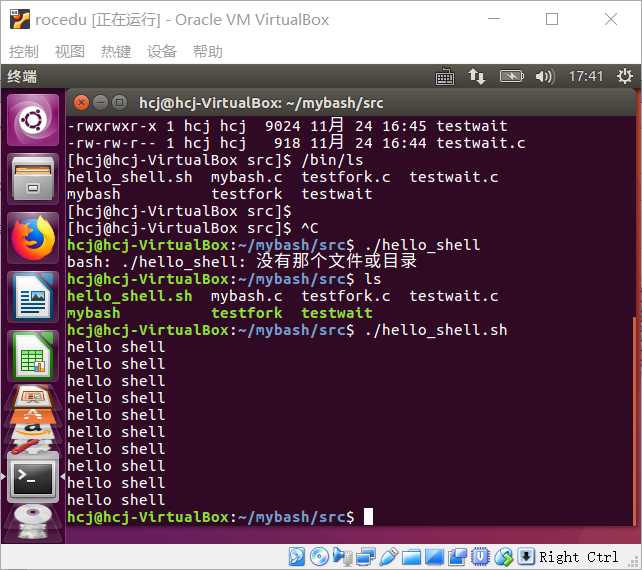
#!/bin/bash:它是bash文件声明语句,表示是以/bin/bash程序执行该文件。它必须写在文件的第一行。echo "hello bash" : 表示在终端输出“hello bash”。exit 0 : 表示返回0。在bash中,0表示执行成功,其他表示失败。$ ./bash,在终端输出“hello shell”。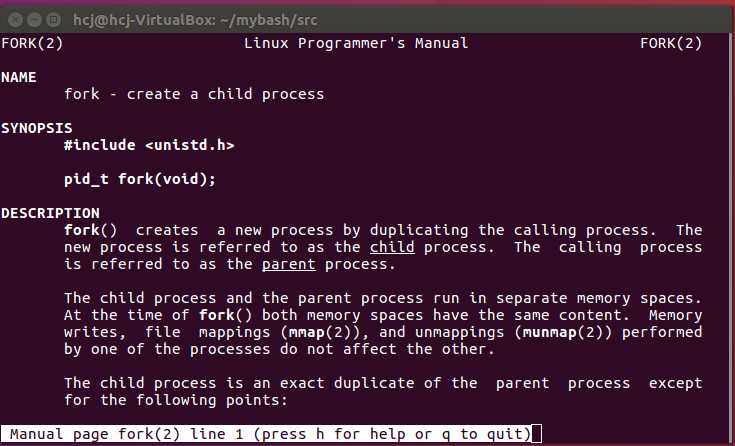
#include <unistd.h>
#include <stdio.h>
int main ()
{
pid_t fpid; //fpid表示fork函数返回的值
int count=0;
fpid=fork();
if (fpid < 0)
printf("error in fork!");
else if (fpid == 0) {
printf("i am the child process, my process id is %d\n",getpid());
printf("I‘m the child\n");
count++;
}
else {
printf("i am the parent process, my process id is %d\n",getpid());
printf("I‘m the father\n");
count++;
}
printf("统计结果是: %d\n",count);
return 0;
} 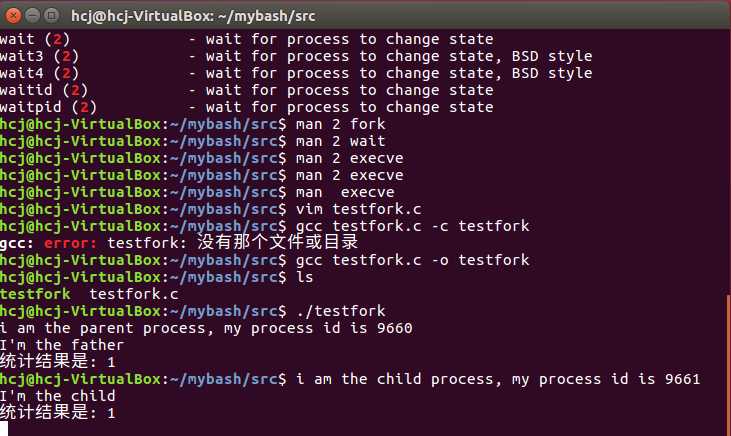
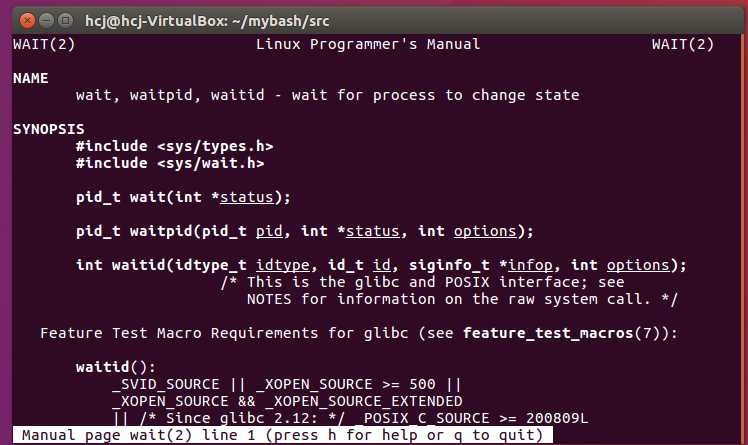
#include <sys/types.h> /* 提供类型pid_t的定义 */
#include <sys/wait.h>
pid_t wait(int *status);下面运行一个例子来理解wait调用:
#include <sys/types.h>
#include <sys/wait.h>
#include <unistd.h>
#include <stdlib.h>
#include <stdio.h>
#include <errno.h>
int main()
{
pid_t pc, pr;
pc = fork();
if ( pc < 0 ) /* 如果出错 */
{
printf("create child prcocess error: %s/n", strerror(errno));
exit(1);
}
else if ( pc == 0) /* 如果是子进程 */
{
printf("I am child process with pid %d \n", getpid());
sleep(3);/* 睡眠3秒钟 */
exit(0);
}
else /* 如果是父进程 */
{
printf("Now in parent process, pid = %d/n", getpid());
printf("I am waiting child process to exit.\n");
pr = wait(NULL); /* 在这里等待子进程结束 */
if ( pr > 0 ) /*子进程正常返回*/
printf("I catched a child process with pid of %d\n", pr);
else /*出错*/
printf("error: %s/n.\n", strerror(errno));
}
exit(0);
}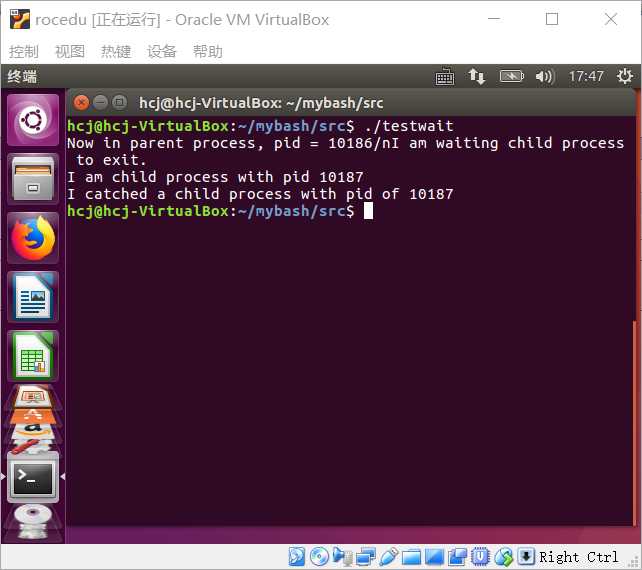
man -k exec查看手册得: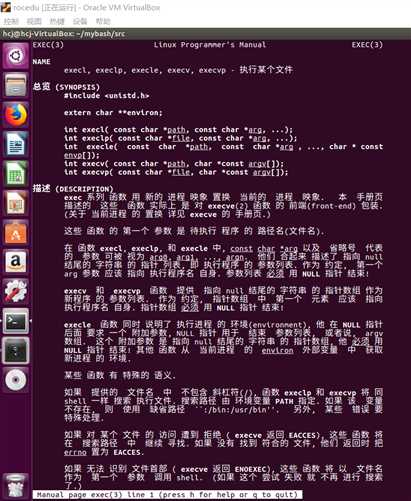
int execl(const char pathname, const char arg0, ... /* (char )0 );,execl()函数用来执行参数path字符串所指向的程序,第二个及以后的参数代表执行文件时传递的参数列表,最后一个参数必须是空指针以标志参数列表为空.int execv(const char path, char const argv[]);,execv()函数函数用来执行参数path字符串所指向的程序,第二个为数组指针维护的程序参数列表,该数组的最后一个成员必须是空指针。int execlp(const char filename, const char arg0, ... /* (char )0 / );,execlp()函数会从PATH环境变量所指的目录中查找文件名为第一个参数指示的字符串,找到后执行该文件,第二个及以后的参数代表执行文件时传递的参数列表,最后一个参数必须是空指针.int execvp(const char file, char const argv[]);,execvp()函数会从PATH环境变量所指的目录中查找文件名为第一个参数指示的字符串,找到后执行该文件,第二个及以后的参数代表执行文件时传递的参数列表,最后一个成员必须是空指针。由于exec函数会取代执行它的进程,一旦exec函数执行成功, 它就不会返回了,进程结束。但是如果exec函数执行失败, 它会返回失败的信息, 而且进程继续执行后面的代码。所以通常exec会放在fork() 函数的子进程部分,来替代子进程执行,执行成功后子程序就会消失, 但是执行失败的话,必须用exit()函数来让子进程退出。
mybsah的实现代码:
#include <stdio.h>
#include <stdlib.h>
#include <assert.h>
#include <string.h>
#include <unistd.h>
#include <pwd.h>
#define PATH "/home/"
void print_info()
{
uid_t id = getuid();
char *status = "$";
if( id == 0)
{
status = "#";
}
struct passwd *p = getpwuid(id);
if(p == NULL)
{
printf("mybash>>");
fflush(stdout);
return;
}
char path[128] = {0};
getcwd(path,256);
char *q = "/";
char *s = strtok(path,"/");
while( s != NULL)
{
q = s;
s = strtok(NULL,"/");
}
char hostname[128] = {0};
gethostname(hostname,128);
printf("[%s@%s %s]%s ",p->pw_name,hostname,q,status);
}
int main()
{
while(1)
{
print_info();
char buff[128] = {0};
fgets(buff,128,stdin);
buff[strlen(buff)-1] = 0;
char *myargv[10] = {0};
char *s = strtok(buff," ");
if(s == NULL)
{
continue;
}
myargv[0] = s;
int i = 1;
while((s = strtok(NULL," ")) != NULL)
{
myargv[i++] = s;
}
if(strcmp(myargv[0],"exit") == 0)
{
exit(0);
}
else if(strcmp(myargv[0],"cd") == 0)
{
if(chdir(myargv[1]) == -1)
{
perror("chdir error");
}
continue;
}
pid_t pid = fork();
assert(pid != -1);
if(pid == 0)
{
char path[256] = {0};
if(strncmp(myargv[0],"./",2) != 0 && strncmp(myargv[0],"/",1) != 0)
{
strcpy(path,PATH);
}
strcat(path,myargv[0]);
execv(path,myargv);
perror("execv error");
exit(0);
}
else
{
wait(NULL);
}
}
}
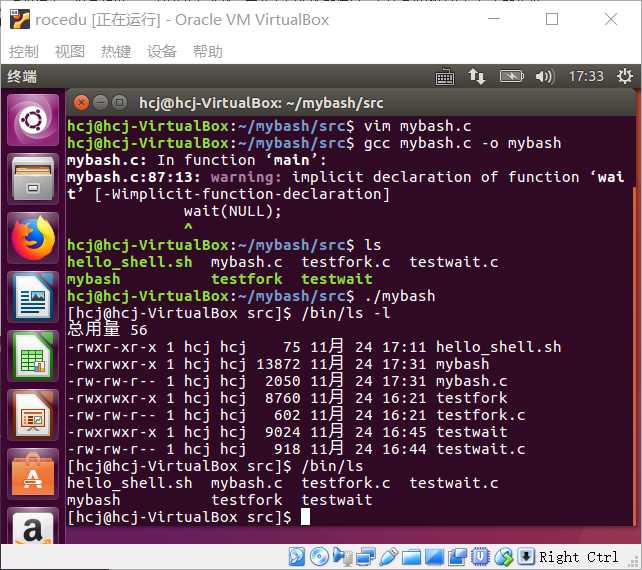
标签:子进程 失败 运行 代码分析 parent strcpy 统计 tab键 图片
原文地址:https://www.cnblogs.com/20165324hcj/p/10012854.html